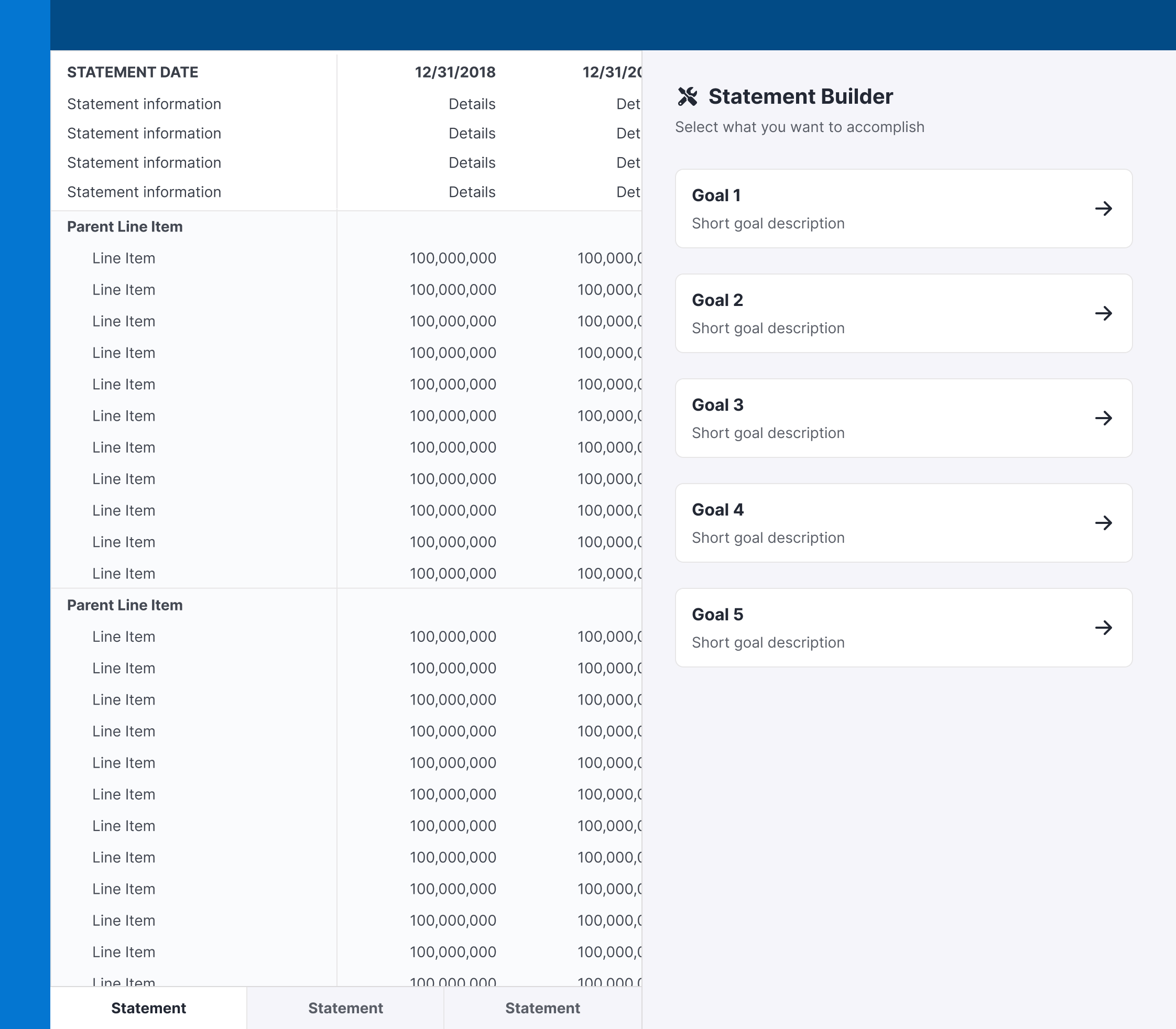The Statement Builder is a core tool for creating financial statements off of historical data. Despite strong demand from customers, our analytics platform showed us the original version had low adoption and poor success rates due to a confusing UI and limited functionality. I led the redesign to improve usability, expand functionality, and future-proof the experience. The new design increased success rates by over 3x and enabled ongoing expansion into new statement types.
Low success rate: Only 16% of user sessions resulted in success.
Overly complex UI: A single interface attempted to support multiple goals, creating friction and confusion.
Lack of scalability: We needed to add new capabilities, but the existing design couldn’t naturally expand to accommodate them.
Original UI
.png)
Every user: Where do I start?
I reimagined the Statement Builder around a simple principle: one UI per goal.

New Goal Selection UI

Dedicated UI per goal
Streamlined entry point: Instead of forcing multiple workflows into one screen, users now start by choosing their goal.
Goal-oriented workflows: Each statement type was given its own clear flow, reducing confusion and helping users stay on track.
Rapid iteration: With limited time for external testing, I created quick mockups, validated flows with internal subject matter experts, and got stakeholder buy-in.
Phased rollout: We launched two redesigned flows, gathered feedback, refined them, and then expanded with additional flows.
This approach gave us both immediate usability improvements and a structure that could scale to new statement types in the future.
This redesign transformed the Statement Builder from an underperforming, high-demand feature into a scalable, results-driving tool. By reframing the experience around user goals, adoption and success rates improved dramatically, setting the foundation for continued expansion and long-term value.
+86.56%
User session growth
2x Faster
Completion time halved
+2 New Flows
New capabilities added
Automation opportunities: Early exploration with AI shows promise for efficiency gains, but accuracy remains a top concern.
Usability testing: Success rates improved significantly, but more testing can uncover how to increase it further.
Technical Evolution: Future releases can evolve the validation system to improve usability.

.png)


